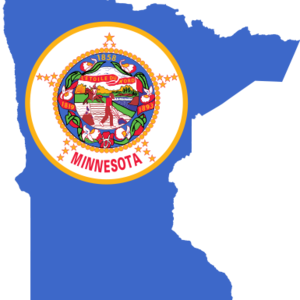Minnesota breathes easier after 10 years with biodiesel standard

April 6, 2016
BY The American Lung Association in Minnesota
Minnesota’s commitment to biodiesel use has paid off with an important impact on air quality, according to an analysis of the cleaner-burning fuel by the American Lung Association in Minnesota.
“I think the amount of air pollution we are preventing right now by blending biodiesel into traditional petroleum diesel would surprise many people,” said Robert Moffitt, director of media relations for ALAMN. “For example, we estimate the summer and winter blends used in Minnesota prevent 130 tons of particulate matter, 319 tons of hydrocarbon and 2,634 tons of carbon monoxide emissions from entering our air every year.”
Particulate pollution can cause wheezing, coughing and respiratory irritation, and exposure may trigger asthma attacks. Exposure to particulates is especially harmful to those with asthma and chronic obstructive pulmonary disease, including chronic bronchitis and emphysema.
Advertisement
Advertisement
ALAMN also found that during the 10-year period with biodiesel as a fuel standard for Minnesota, the state has realized a reduction of more than 7.4 billion pounds, or 3.7 million tons, of carbon dioxide emissions.
The current use of winter 5 percent (B5) and summer 10 percent (B10) blends, Moffitt said, is equal to removing 128,000 passenger vehicles from Minnesota’s roads each year.
Advertisement
Advertisement
“While the newer diesel engines have sophisticated emissions control features, it will still be many years before all of the diesel engines in use have them,” said Moffitt. “As our understanding of the health effects of air pollution improves, federal air quality standards get tougher. That’s exactly how the Clean Air Act was meant to work, and with some help from cleaner fuels like biodiesel, all of Minnesota’s counties currently meet federal air quality standards.”
In 2014, Minnesota became the first state in the nation to require 10 percent biodiesel, or B10, in diesel blends sold during the summer months. B10 is required from April 1 to Sept. 30 and B5 is required during the remaining winter months.
“Biodiesel blends are easy to find in Minnesota—they can be found at every retailer with a diesel fuel pump,” said Moffitt. “They are also easy to use, requiring no special engines or modifications. It will work just as well in an older diesel engine as in a brand new truck, many of which are factory-approved for blends up to 20 percent.”
For more information, visit www.biodiesel.mn.
Related Stories
Iowa farmers have a new market opportunity for their 2025 soybean crop. Landus is expanding its Clean Fuel Regulation initiative, made possible by recent policy changes expected to increase Canada's demand for liquid biofuel.
Klobuchar, Moran introduce bipartisan legislation to support biorefineries, renewable chemicals, and biomanufacturing
Sens. Amy Klobuchar, D-Minn., and Jerry Moran, R-Kan., on July 31 announced the introduction of the Ag BIO Act. The legislation aims to update the USDA’s loan guarantee program to better support biorefining projects.
U.S. Secretary of Agriculture Brooke L. Rollins on Aug. 1 announced the opening of a 30-day public comment period for stakeholders to provide feedback on the department’s reorganization plan, as outlined in the memorandum released July 24.
Sen. Chuck Grassley, R-Iowa, on July 31 pressed Derek Theurer, President Donald Trump’s nominee to serve as under secretary of the U.S. Department of Treasury, on the expected timeline for the release of 45Z guidance.
Avfuel Corp., the leading independent supplier of aviation fuel and services, is expanding its sustainable aviation fuel (SAF) footprint with the addition of a new, strategic supply point in Denver, Colorado—the first of its kind in the region.
Upcoming Events










